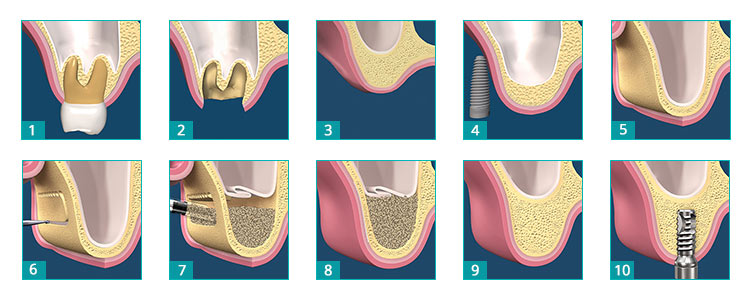Sinus Lift or Maxillary Sinus Floor Augmentation

Sinus lift procedure totally signifies the quote “today’s accomplishments were yesterday’s impossibilities“ Apart from being a sensitive procedure it’s also demands precision and able skills.
Maxillary sinus like other sinus cavities is a air filled hollow space in the skull.
Sinus Lift is a procedure aimed at increasing the quantity of bone in the posterior region of the upper jaw especially in the premolar and molar region by lifting the Schneiderian Membrane and augmenting with a bone graft.
In individuals with tooth loss and limited bone volume in the posterior region, sinus lift a procedure based on the principle of bone remodelling aids rehabilitation. Though not very common, sinus lift for dental implants is a frequent and successful procedure carried out by oral surgeons across the globe.
Sinus lift is performed either indirectly or directly based on the amount of lift or bone augmentation required and the approach either is minimally invasive or invasive respectively.
Direct Sinus Lift
- Invasive
- Lateral Window Approach ( Lateral Antrostomy )
- Single or Two Step Procedure
- Augmentation Heavy
- Sensitive
- A reasonable down time
In a direct sinus lift a surgical window is created by the oral surgeon on the lateral side of the upper jaw, in the region of premolars adjacent to the sinus floor utilising a muco-periosteal flap all the way till vestibule after an adequate local anaesthesia.
The bone is either drilled through, using a Surgical Motor with Sinus Scoring Bur or a Piezotome. Piezotome offers tissue sensitive feature which minimises the possibility of accidental sinus puncture. Once an access is achieved the dislodged bone along with the membrane is lifted up using the sinus lifting instruments. Depending on the extent of augmentation the graft material is carefully packed.
→ Single Stage Direct Sinus Lift Implant Surgery :
Here the implant is secured after lifting the sinus and then the graft material is packed carefully around the implant into the lifted space ensuring the integrity of Schneiderian Membrane. After osseointegration and bone remodelling which usually takes 4 to 6 months the implant is loaded with prosthesis.
→ Two Stage Direct Sinus Lift Implant Surgery :
Here the lifted sinus is grafted and accessed at a later stage through the conventional crestal approach for implant placement. Since its two stage, additional surgery, the sequelae of healing, post operative care, limitations on eating and drinking are unavoidable.
→ Indirect Sinus Lift or Crestal Osteotome
As the name suggests the procedure involves lifting the sinus floor indirectly through crestal osteotomy. After drilling through the crestal bone 2mm short of sinus floor (minimum bone thickness mandate for indirect sinus lift is 5mm) an osteotomy is performed using an osteotome and mallet. The lifted site is grafted followed by an implant drill, both of which additionally lift the sinus indirectly.
→ Post Operative Care after Sinus Lift Implant Surgery
Avoid intra oral pressure which can lead to pressure on the floor of the sinus like sneezing, coughing, blowing through nose, pressurised cabins like aircrafts may also increase sinus pressure hence avoid flying for at least four weeks after surgery. Scuba diving should be avoided for at least 16 weeks. It’s imperative to use anti-inflammatory nasal drops in place of nasal sprays at least in the first three weeks.
Though the sinus lift procedure is both sensitive and invasive the prognosis or success of the procedure depends on the same surgical mandates like …
- Hygienic, disinfected and sterile environment
- Skill of the surgeon
- Use of technologies like piezotome (minimises risks)
- Use of anti-inflammatory and antibiotics after surgery
- Uninfected and sterile graft
- Good surgical protocols
Sinus lift either direct or indirect is performed under local anaesthesia hence absolutely painless, it is a sensitive procedure with complications of possible rupture of sinus membrane. Risks in surgery is inevitable and sinus lift is no different the possible risks are maxillary sinusitis, sinus membrane rupture and oro-anatral fistula formation.
Small perforations usually heal by itself provided the clot is intact, the patient should be asked to refrain from blowing air through nose at least for the next 4 to 6 weeks.
In prominent perforations surgical intervention is required. A perforated sinus will have following symptoms crusting of the nose, wheezing through nose, runny nose repeated URTI( Upper respiratory tract infections )

